
This weekend, Tyler celebrates its 83rd Rose Festival with a parade, rose show, arts and crafts fair, and guided rose garden tours. If you visit Tyler, be sure to stop by the Tiger Creek Wildlife Refuge and support this nonprofit that provides a home to rescued big cats.
Tyler and roses
Nicknamed the Rose Capital, Tyler’s agricultural industry shifted from growing peaches to roses in the 1920s. By World War II, Tyler grew over half of the rosebushes sold in the United States. Tyler’s market share has decreased to about 15 percent, however, roses remain a major, area industry. Each October, Tyler celebrates its rose history with the Texas Rose Festival. The Tyler Rose Museum, open year round, tells the region’s story with rose festival memorabilia, video, and a computerized catalog of 250 rose varieties.
Tyler Municipal Rose Garden
The garden is at its height during the month of October. You’ll find 500 different rose varieties with fanciful names like Cinderella’s Song, Summer Wind, and Freckles. The rose garden contains over 38,000 rose bushes. I also recommend visiting in early spring when the garden is ablaze with blooming azalea displays in pink, salmon, magenta and red.
Tiger Creek
Located just outside Tyler, Tiger Creek Wildlife Refuge’s stated purpose is “to provide rescue and rehabilitation to big cats that have been abused, neglected, or displaced.” The 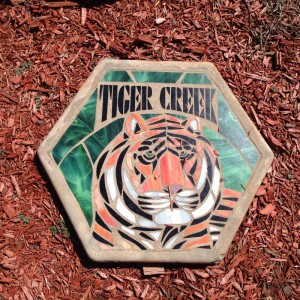 refuge spans 150 acres and houses over 40 big cats from tiger to bobcat. Several of the cats were victims of the exotic pet trade of the 1990s. Some cats were relocated when other refuges closed. And many of the cats have physical problems, like Babs. A bobcat, Babs is blind, most probably due to poor nutrition when he was kept as a pet.
refuge spans 150 acres and houses over 40 big cats from tiger to bobcat. Several of the cats were victims of the exotic pet trade of the 1990s. Some cats were relocated when other refuges closed. And many of the cats have physical problems, like Babs. A bobcat, Babs is blind, most probably due to poor nutrition when he was kept as a pet.
Each big cat has its own story. There is a tiger rescued from a man who abused her and had her fight dogs when she was a cub. The tiger, Sierra, was once owned by Michael Jackson. Then there is Tin Cup, a mountain lion. A farmer’s dog brought the cub (the size of a tin cup) to a farmhouse porch in New Mexico. Efforts to locate Tin Cup’s mother failed, so the farmer contacted Tiger Creek. Tin Cup, a handsome, playful, and photogenic cat, is my family’s favorite.
When you go
The Texas Rose Festival is October 13 through 16. Most events are free. Both the Tyler Rose Museum (420 Rose Park Drive) and the Tyler Municipal Rose Garden (624 North Broadway) are open year round.
Tiger Creek Wildlife Refuge (17552 FM 14) is open most days. While more expensive, I strongly recommend the guided tour, or the combo tour. The docents are extremely knowledgeable about the cats and their stories.

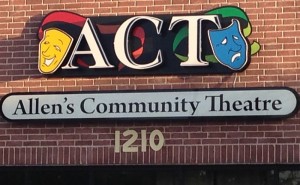 community theater at its best with reasonably priced tickets and well-done performances.
community theater at its best with reasonably priced tickets and well-done performances.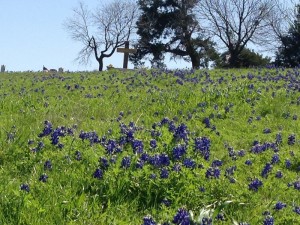 parks near Dallas offer plenty of springtime blooms including fields of bluebonnets! The Facebook page,
parks near Dallas offer plenty of springtime blooms including fields of bluebonnets! The Facebook page,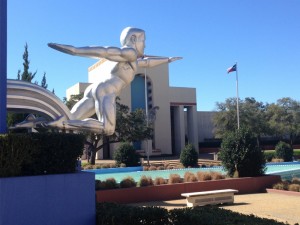 Fair Park is one of Dallas’ most beautiful locations and also one of its most overlooked. If you are like most Dallas residents, you visit Fair Park only once a year during the Texas State Fair. Yet this 227-acre park is open year round. On a sunny day, I find the art and architectural at Fair Park simply breathtaking.
Fair Park is one of Dallas’ most beautiful locations and also one of its most overlooked. If you are like most Dallas residents, you visit Fair Park only once a year during the Texas State Fair. Yet this 227-acre park is open year round. On a sunny day, I find the art and architectural at Fair Park simply breathtaking.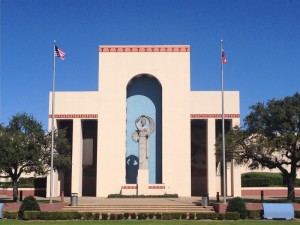 porticos at the Automobile Building and Centennial Hall frame six statues. Each statue represents a nation who, at one time, controlled Texas. Designed by Carlo Ciampaglia (Centennial Hall) and Pierre Bourdelle (Automobile Building), the statues bear the classical look of Greek goddesses.
porticos at the Automobile Building and Centennial Hall frame six statues. Each statue represents a nation who, at one time, controlled Texas. Designed by Carlo Ciampaglia (Centennial Hall) and Pierre Bourdelle (Automobile Building), the statues bear the classical look of Greek goddesses. 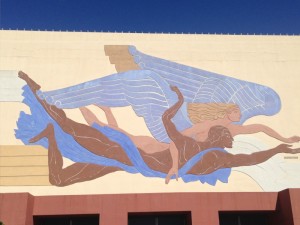 Reliefs on Centennial Hall continue the mythological theme and mix seamlessly with the modernistic murals of industry at the Automobile Building. Recently recreated fountain statues of The Tenor and The Contralto, add another exciting note to the whole Art Deco immersion.
Reliefs on Centennial Hall continue the mythological theme and mix seamlessly with the modernistic murals of industry at the Automobile Building. Recently recreated fountain statues of The Tenor and The Contralto, add another exciting note to the whole Art Deco immersion.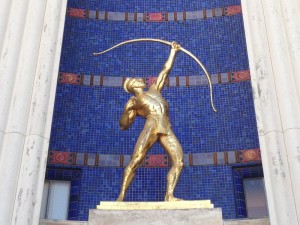 The
The 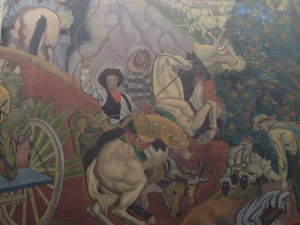 The murals cover every aspect of Texas history from the 1500 arrival of Europeans to images of higher education and state industries. On the floor, you’ll find mosaics of Texas animals, like the jackrabbit and horned lizard. Even the ceiling in the Great Hall is chocked full of symbolism – designed by George Davidson to represent Aztec motifs of roadrunner, armadillo, and rattlesnake. You can simply spend hours finding new tidbits of history and symbolism throughout the room.
The murals cover every aspect of Texas history from the 1500 arrival of Europeans to images of higher education and state industries. On the floor, you’ll find mosaics of Texas animals, like the jackrabbit and horned lizard. Even the ceiling in the Great Hall is chocked full of symbolism – designed by George Davidson to represent Aztec motifs of roadrunner, armadillo, and rattlesnake. You can simply spend hours finding new tidbits of history and symbolism throughout the room.